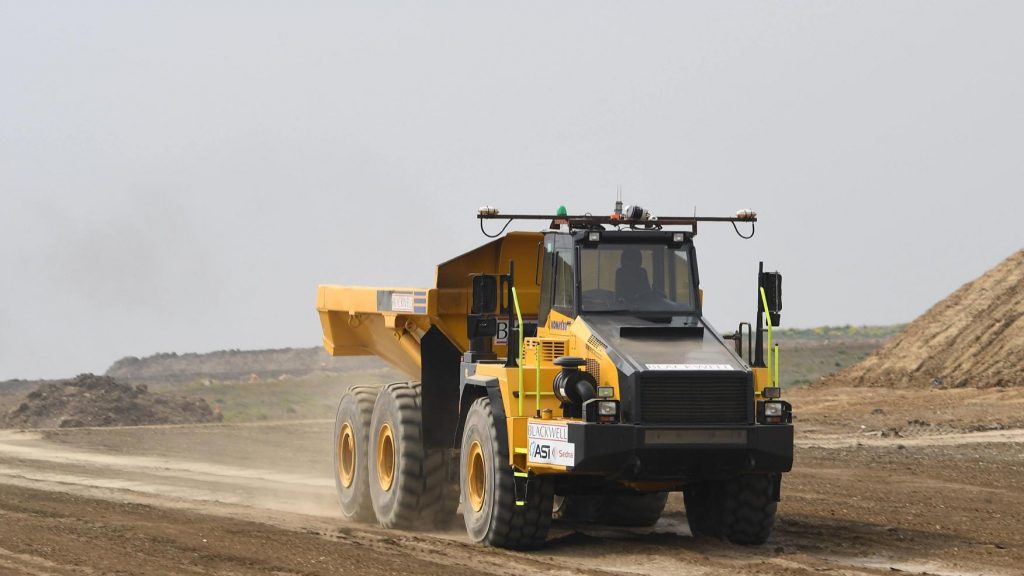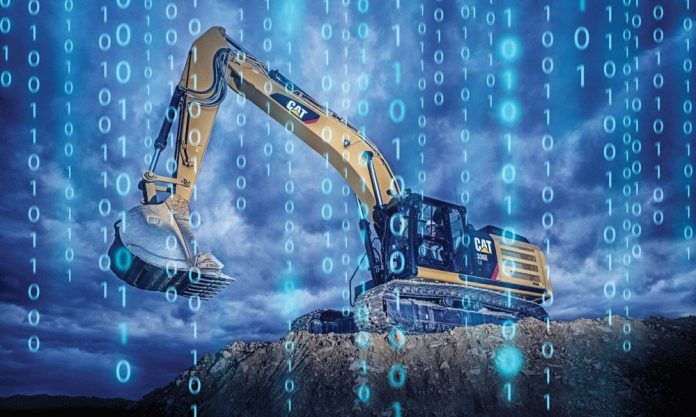Big data is already being used by the construction industry through the design, build and operate lifecycle. Focusing on the build phase of a project, weather, traffic and construction equipment can be analysed to determine optimal phasing of construction activities. Andrew Johnson of Operam takes a look
Construction equipment is vital to all construction projects. From power tools to large earthmoving plant equipment, they greatly increase the productivity of individual workers. There is fierce competition in the construction industry and many construction equipment manufacturers are investigating or investing in new technologies to enhance their line of equipment to provide a competitive edge.
Earthmoving equipment is highly productive but can be very expensive to manage and maintain, and work must be programmed to allow the equipment to operate at maximum output throughout their working day.
There are manufacturers and suppliers still using legacy systems that work and who will be reluctant to change, with others seeking new technologies to save time and reduce costs, while still providing quality products for the customer. Construction equipment is a critical resource in any construction project, ranging from small power tools to large earthmoving equipment and is normally required in large quantities.
There are many earthmoving manufacturers at the forefront of developing sustainable earthmoving equipment, which is safe, reliable, durable and efficient: Caterpillar, JCB and Volvo are trying to increase their growth in both business and their customers’ businesses. This is influenced by numerous factors, including reducing breakdown occurrence and unscheduled maintenance. This can hurt both the manufacturer and the customer as reputation moves fast in the construction industry and wasted time costs money.
Manufacturers collect significant amounts of data from individual sales, location, social media posts, web searches and much more. They also gather data from the equipment, this could be engine output, hours run, performance, location and maintenance. The main aim of collecting this data is to ensure the supply chain and the customers are happy. All this amount of data can amount to big data.
Big data and construction equipment
Due to the growth in the market environment and that of the continuous challenge of meeting the demands of the customer, with the constant shift of strategic decision-making requirements, which as all led to the rise of the big data in businesses. Big data will play a fundamental role in the evolution, transformation and performance evaluation measures within any supply chain of organisations.
Already Volvo has unveiled an autonomous battery electric load carrier. The concept machine is part of a research project to transform the quarry and aggregate industry by safely removing the human operator, reducing carbon emissions by up to 95% and total cost of ownership by up to 25%. It relies on huge amounts of real-time big data to operate safely and efficiently within the quarry.
The concept of big data is flourishing in the construction industry, for the large tier one and two commercial construction contractors. All the research studies presented that big data is driving the company forward, but it could be a lot better. This is because of data security, privacy and protection.
Construction companies, the data owners, have management issues. They are very protective of their big data and focus more on access control/intruder prevention. Sharing the data with other construction companies could aid their SC as they can manage their assets better and share resources, thus saving costs.
Using big data applications rely on real-time, instant data transfer between project sites. This can be a problem where there is no network infrastructure or where there are low bandwidth and blackspots in rural, undeveloped areas where reliance is on mobile data networks. If the data transfer is offline, the big data will not be effective or accurate.
The technology experts are now the critical assets and therefore big data will not be the driving force. Rather, the construction industry itself will lead the innovation by applying contemporary tools to solve topical issues.
Protecting and sharing big data is the issue across the construction industry, as explained in the research paper Big Data in the Construction Industry: A Review of Present Status, Opportunities and Future Trends. The industry would manage assets better if they communicated. Real-time big data applications rely on internet connectivity to transfer data; this is a problem in rural undeveloped areas.
Even if there are perfect communications, it is not big data that is the driving force; it is problem-solving and innovation within the construction industry that will make it succeed. Through the paper, it has been highlighted that application and adoption of big data is more adopted within the development of autonomous, hybrid construction equipment, which will have historic effects on the construction industry. It will have a huge impact on the equipment operators, as specialists will be required to manage and operate the autonomous equipment. It will, however, improve safety, reduce emissions and reduce maintenance and fuel costs, resulting in sustainable construction equipment.
In April, Highways England announced that a self-driving 25-tonne dumper is being trialled in a bid to speed up the UK roadworks. It is being tested off the A14 in Cambridgeshire, where work is underway to upgrade a 21-mile (34km) stretch of road between Cambridge and Huntington.

Supply chain management strategies
There is insufficient earthmoving equipment for construction work in the UK, and this is not because of the hire charges as stated by Morgan Sindall Group. In 2017, there are 550 earthmoving dump trucks on hire in the UK, but there is a requirement for 800, and this is due to increase next year with the start of HS2 construction.
Costain stated that: “First- and second-tier contractors are signing up for onerous contracts and pooling equipment from suppliers, this is having a knock-on effect on smaller contractors”.
Faster delivery will save the construction supply chain a 50% reduction in the overall time, from inception to completion, for new build and refurbished assets if there is the equipment available. Not only is this applicable to the construction build but it also affects equipment.
The best equipment hire company will have low costs and good plant equipment for the customer, not the company. It will also delivery to any location, have the latest technology, be reliable and have longevity with product capability output.
Evaluating the feedback of big data technology adoption from contractors, suppliers and customers in real-time will create a more sustainable supply chain and have higher cost benefits and value to the organisation.
Organisations need to manage their construction equipment assets more productively within their supply chain. This data can also be fed back into Building Information Modelling (BIM) systems to schedule maintenance activities when required.
In summary, if the construction industry embraces automated construction equipment it means contractors will be able to build much faster, cheaper, sustainably and, most importantly, more safely. The public can benefit from less disruption while their infrastructure is being improved, with less social and economic impact.
 Andrew Johnson
Andrew Johnson
Adviser
Operam
Tel: +44 (0)1462 488366
Twitter: @_Operam














